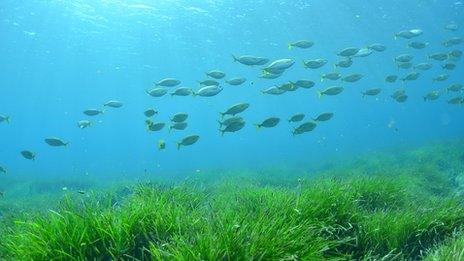Tees Estuary: Conservationists seek site for an oyster reef
- Published
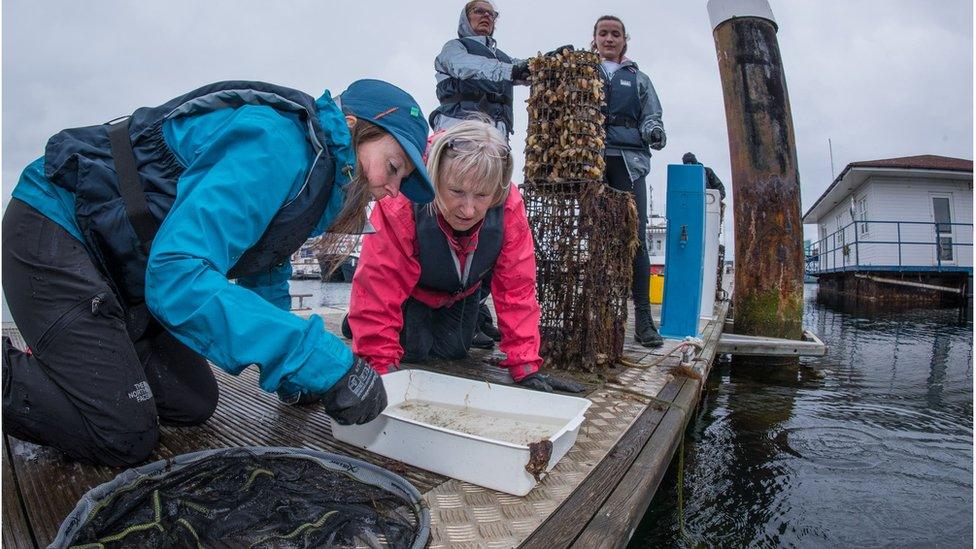
Volunteers have been checking for animals living inside the oyster cages
Conservationists looking to re-introduce oysters and seagrass to the Tees Estuary say they hope to establish a reef soon.
Tees Rivers Trust has spent two years establishing a land-based nursery to grow seagrass plants and a special pond for oysters.
Both are central to revitalising the mouth of the river - restoring marine habitats and helping spawning fish.
Project officer Henry Short said he was glad to see the oysters "thriving".
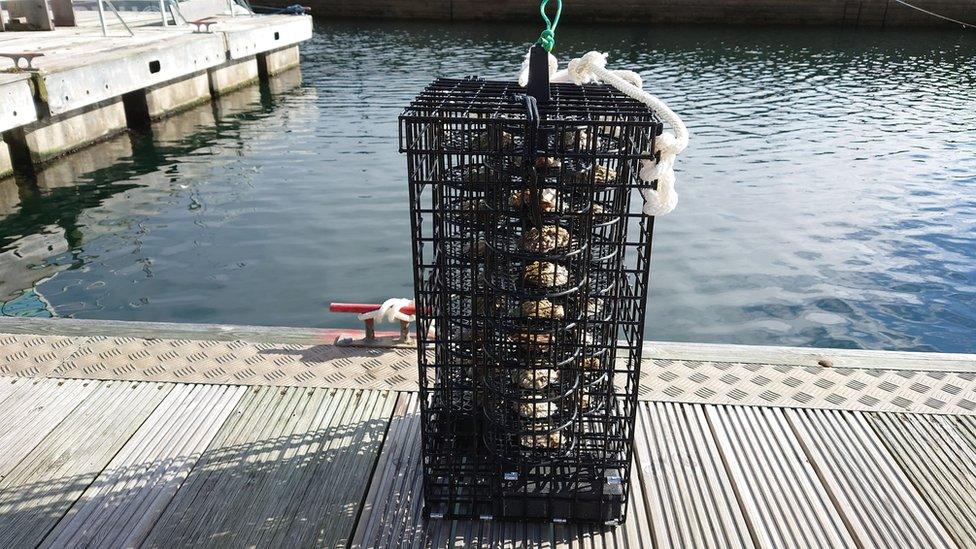
A nursery filled with oysters ready to be lowered into the marina
An oyster "nursery" has been created in Hartlepool marina made up of 20 cages hanging from pontoons, each able to hold more than 600 adult oysters.
The cages, which are monitored by volunteers, found more than 90% of the oysters survived their first year and more than 30 species have been found living within or around the cages, including the critically-endangered European eel.
The project, which was funded by the government's Green Recovery Challenge Fund, has also seen a land-built seagrass nursery created.
In it the trust has been able to test various sediments, temperatures and light to find the best conditions for seagrass to grow so they can pick the most suitable location for planting into the estuary this summer.
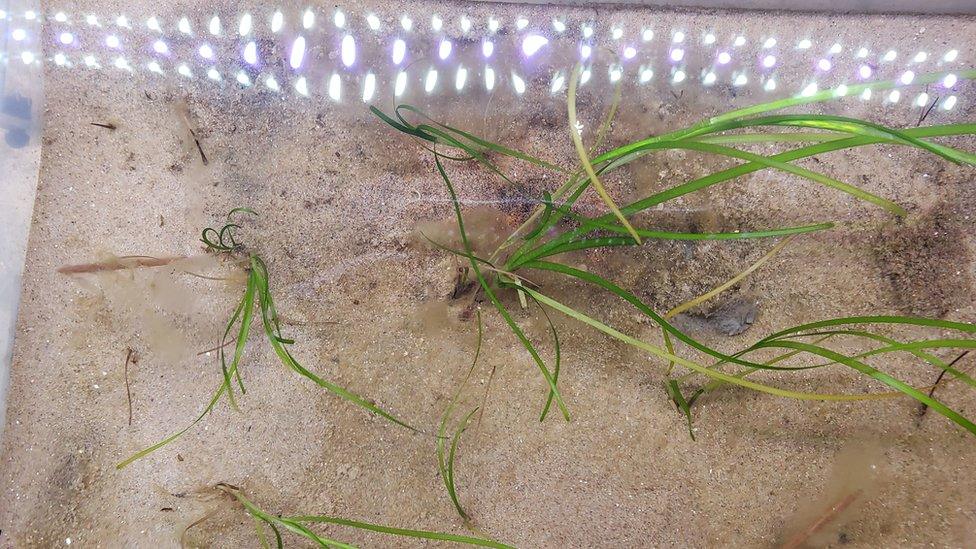
Seagrass plants have been grown in the nursery at Bran Sands from seeds collected at Lindisfarne
Both oysters and seagrass were chosen because of their benefits.
Mr Short said: "This funding has been amazing to help us get a facility up and running which will be vital for estuary restoration for years to come.
"It will allow us to scale up our oyster and seagrass work to create large scale habitats in the Tees Estuary."
Over the coming months seagrass seeds collected from Lindisfarne will be placed in hessian bags to protect them from predators, and dropped into the river, where it will lie dormant over winter before germinating in spring.
The trust is also looking for a suitable site to create an oyster reef in the estuary which will provide a home for the oysters released from the spatting pond - a big pond fed with fresh seawater with a fountain to keep the water circulating and the oxygen levels up.
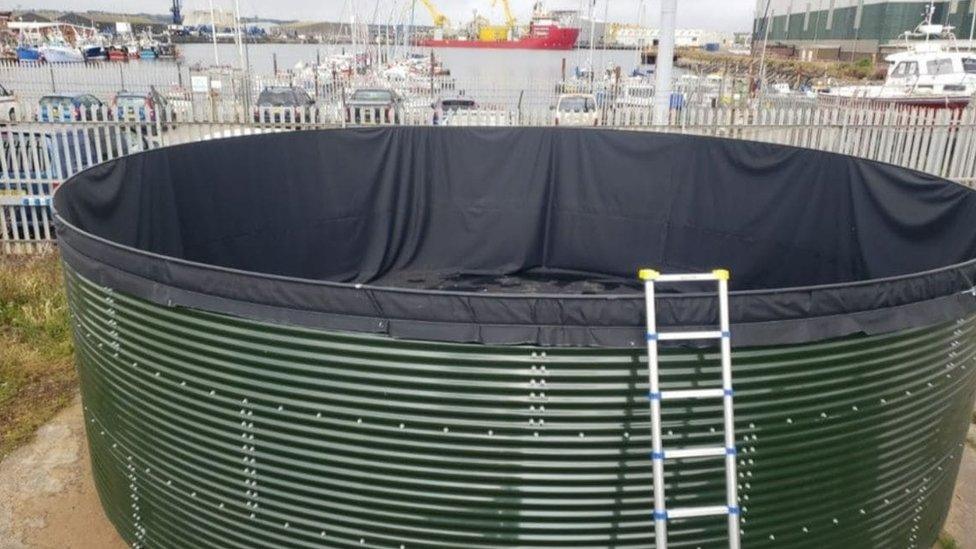
The spatting pond was built by the trust as a place for oysters to breed and grow oyster spat, produced as part of the process

Follow BBC North East & Cumbria on Twitter, external, Facebook, external and Instagram, external. Send your story ideas to northeastandcumbria@bbc.co.uk, external.
- Published27 July 2022
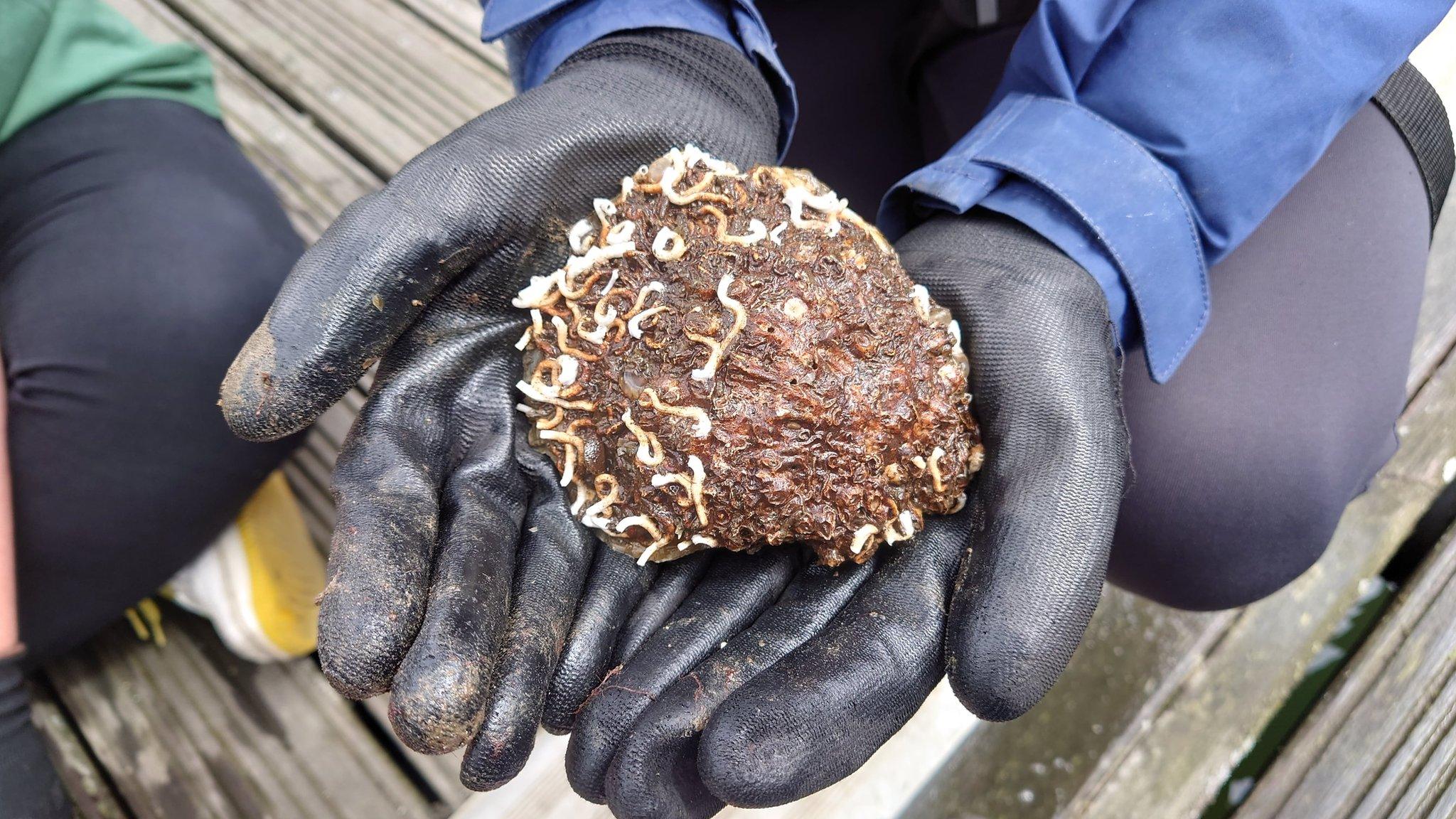
- Published29 June 2022
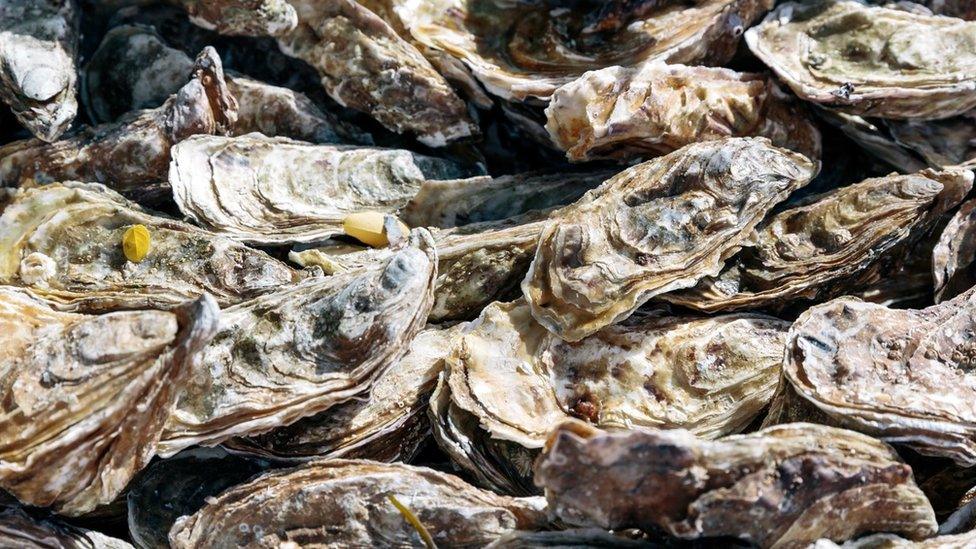
- Published7 June 2022
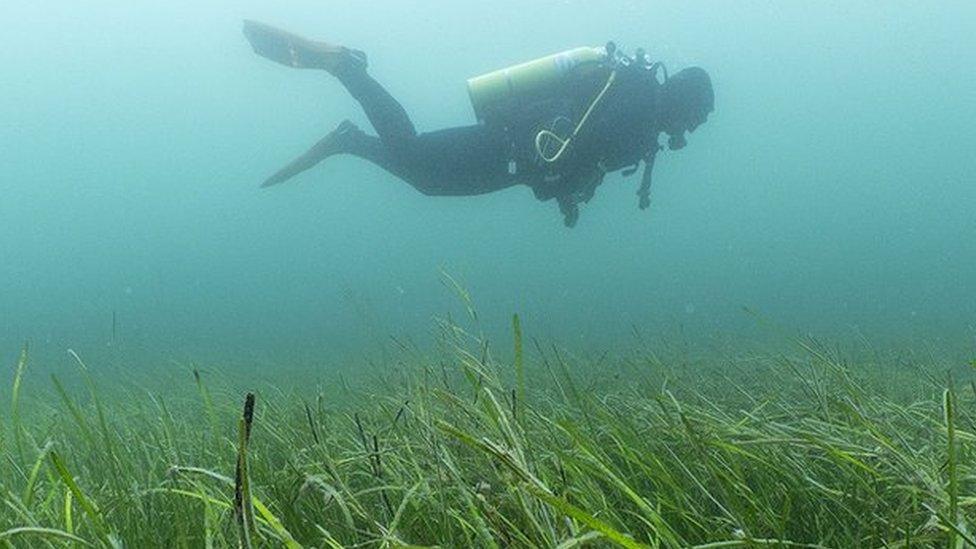
- Published13 March 2021
